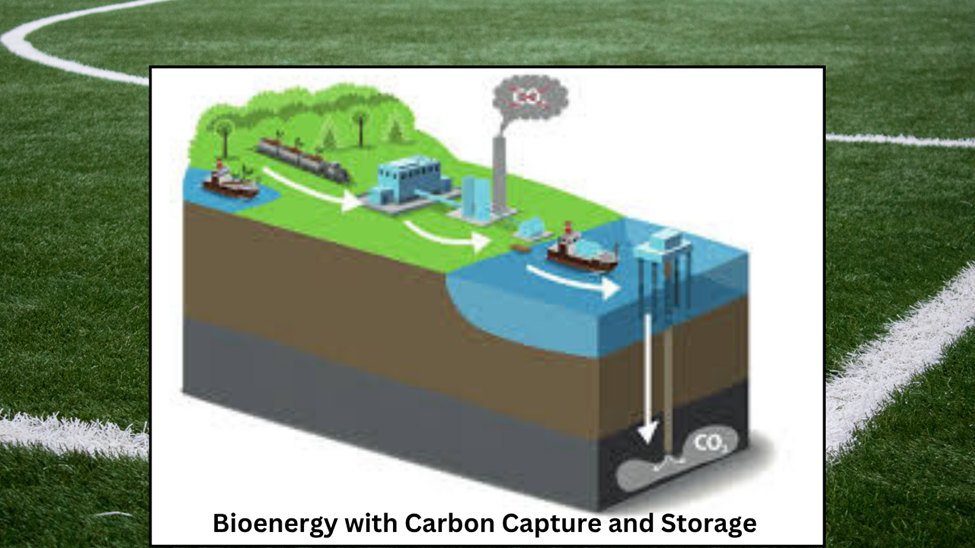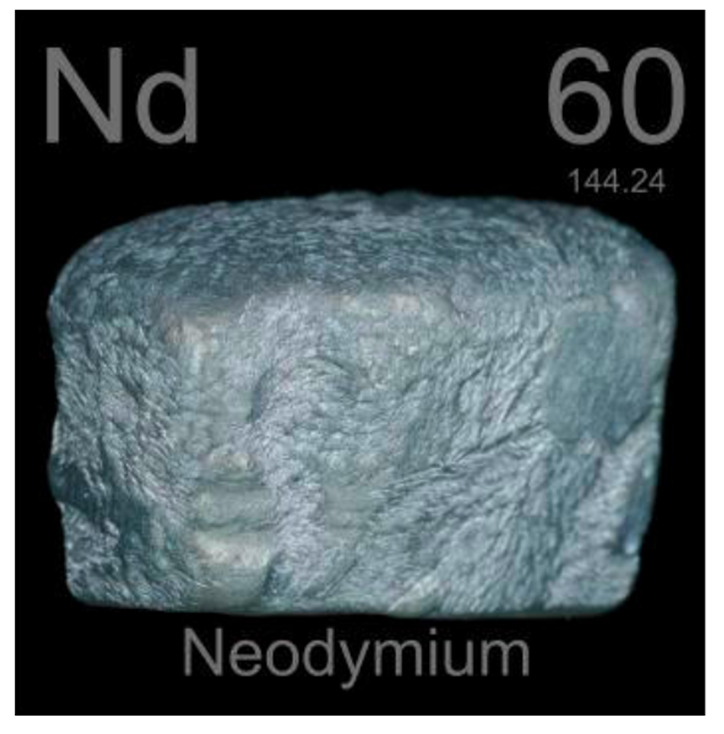In the global race towards a sustainable future, green technology stands as our most powerful ally. At the heart of many revolutionary green technology innovations lies a seemingly unassuming element: Neodymium. This rare earth metal, renowned for its unparalleled magnetic properties, is proving to be indispensable, particularly in the burgeoning fields of renewable energy and, increasingly, in advanced approaches to carbon capture. As of mid-2025, its role is not just significant, but truly crucial.
Carbon Capture: A Key to Decarbonization
Carbon capture, utilization, and storage (CCUS) technologies are vital for mitigating climate change, especially in hard-to-abate industrial sectors and for legacy emissions. The goal of carbon capture is to prevent large amounts of carbon dioxide (CO2) from entering the atmosphere by capturing it from industrial sources (like power plants or factories) or directly from the air.

Traditional carbon capture methods often involve chemical solvents that absorb CO2, which then needs to be regenerated, a process that is energy-intensive. Newer approaches focus on more efficient sorbents, membrane technologies, and even biological processes. The development of advanced materials is critical to making carbon capture economically viable and scalable. As the imperative for global decarbonization intensifies, the role of effective carbon capture becomes ever more prominent. Without robust carbon capture solutions, achieving net-zero emissions will be significantly more challenging.
Role of Neodymium in Green Tech: The Magnetic Backbone
Neodymium's primary contribution to green technology stems from its use in Neodymium Iron Boron (NdFeB) permanent magnets. These are the strongest permanent magnets commercially available, offering high magnetic strength in a compact size. This property makes them indispensable in a range of clean energy applications:

1. Wind Turbines
Modern wind turbines, particularly direct-drive models, rely heavily on neodymium magnets in their permanent magnet generators. These magnets enable higher efficiency and lower energy losses compared to traditional generators, allowing energy generation even at low wind speeds. This significantly boosts the output of renewable energy and reduces the overall carbon footprint of electricity generation.
2. Electric Vehicles (EVs)
The motors in electric and hybrid vehicles utilize neodymium magnets to provide high torque and efficiency. Their compact size allows for the design of lighter and more efficient cars, increasing range and reducing energy consumption. This direct application greatly contributes to reducing transportation sector emissions and facilitates the shift away from fossil fuels, indirectly aiding in carbon capture efforts by lowering overall emissions.

3. Solar Tracking Systems
In advanced photovoltaic installations, precision motors driven by neodymium magnets are used in solar trackers. These systems rotate solar panels to follow the sun's movement throughout the day, increasing their efficiency by 20-30% compared to fixed installations. This maximizes solar energy harvesting and makes solar power more competitive.
Beyond these well-established applications, neodymium is also being explored for its potential catalytic properties in carbon capture and conversion technologies. Research is ongoing into how neodymium oxide, for instance, might improve catalyst performance in green chemistry and sustainable industrial processes, offering pathways for more efficient carbon capture and utilization. While direct neodymium-based carbon capture is still emerging, its indirect impact via efficient renewable energy is already immense.
Buy Carbon Capture Solutions: A Growing Market
The market for carbon capture solutions is experiencing significant growth, driven by corporate sustainability targets, government incentives, and the urgent need to address industrial emissions. Companies and organizations looking to buy carbon capture solutions have a diverse range of technologies and services to choose from. These include:
- Point-Source Capture: Technologies designed to capture CO2 directly from large industrial emitters like power plants, cement factories, and steel mills.
- Direct Air Capture (DAC): Systems that pull CO2 directly from the ambient air, offering a solution for diffuse emissions.
- Carbon Utilization: Technologies that convert captured CO2 into valuable products like fuels, chemicals, or building materials, creating a circular economy around carbon capture.
- Storage Solutions: Services for safely and permanently injecting captured CO2 into deep geological formations.
Major players like Carbon Engineering, Climeworks, Aker Carbon Capture, and Shell (with its Quest project) are at the forefront of this market. Investing in these solutions is crucial for industries aiming to reduce their environmental impact and comply with evolving climate regulations.
What is Green Tech: The Broader Context
Green technology, also known as environmental technology or clean technology, refers to any technology that aims to reduce human impact on the natural environment. This broad field encompasses innovations designed to:
- Reduce greenhouse gas emissions (e.g., renewable energy, carbon capture).
- Minimize waste and pollution (e.g., advanced recycling, waste-to-energy).
- Conserve natural resources (e.g., water treatment, energy efficiency solutions).
Support sustainable agriculture and land use.
The overarching goal of green technology is to create products and processes that are environmentally friendly, economically viable, and socially responsible. It's about developing sustainable solutions that meet the needs of the present without compromising the ability of future generations to meet their own needs. Neodymium's role in facilitating high-efficiency renewable energy positions it as a foundational component within this essential sector.

Green Tech News: Latest Developments
Recent green tech news highlights the rapid pace of innovation. As of mid-2025, there's a strong focus on scaling up existing solutions and bringing new technologies to market. For instance, there's increased investment in advanced battery storage solutions to complement intermittent renewables, and significant progress in smart grid technologies that optimize energy distribution. Breakthroughs in carbon capture materials, such as advanced sorbents and metal-organic frameworks (MOFs), are regularly announced, promising more efficient CO2 removal. The push for green hydrogen production, often powered by renewable energy sources that utilize neodymium magnets, is also a prominent theme in green tech news.
Bloom Energy Green Solutions: A Case Study
Bloom Energy is a notable player in the green technology space, particularly known for its solid oxide fuel cell (SOFC) technology. While not directly a producer of neodymium-based products, Bloom Energy's solutions indirectly benefit from the advancements neodymium enables in the broader renewable energy landscape. More directly, Bloom's fuel cell platform can be integrated with carbon capture technologies.

They are actively exploring approaches that not only remove carbon but also convert it into new sources of high-quality carbon for potential use in various industries. By providing highly efficient, low-carbon power generation, Bloom Energy's systems contribute to reducing the overall carbon footprint of industrial operations, making the task of carbon capture more manageable. Their collaborations, such as with Chart Industries, aim to make carbon capture more efficient and affordable, leveraging their high-purity CO2 exhaust stream to generate near zero-carbon power.
UK Green Tech Market: A Thriving Ecosystem
The UK green tech market is a rapidly expanding sector, with a strong focus on decarbonization and sustainability. As of 2025, the market is projected to reach £125 billion, driven by robust government support, technological advancements, and increasing demand for sustainable solutions. Renewable energy remains the largest segment, but areas like waste management, water treatment, and energy efficiency are also seeing significant growth.
The UK is actively investing in carbon capture and storage (CCS) projects, recognizing their importance for meeting net-zero targets. The market also faces challenges, such as a skills gap in specialized areas like carbon capture and environmental analytics. However, the strong growth trajectory, projected to reach £220 billion by 2030, signals a healthy and innovative environment for green technology in the UK, where materials like neodymium are critical enablers.
Environmental Technology: The Neodymium Imperative
In the broader context of environmental technology, neodymium's role is becoming increasingly critical. As the world transitions away from fossil fuels, the demand for highly efficient renewable energy systems will only grow. This, in turn, fuels the demand for neodymium. However, the supply chain for rare earth metals like neodymium, heavily concentrated in China, presents geopolitical and environmental challenges.

To ensure the sustainability of the green technology revolution, research into alternative materials, more efficient recycling processes for neodymium from end-of-life products (like wind turbines and EV motors), and diversification of mining sources are paramount. Without a secure and sustainable supply of crucial metals like neodymium, the widespread deployment of the environmental technologies needed to combat climate change, including advanced carbon capture solutions, will face significant hurdles. The future of environmental technology is inextricably linked to the responsible management and innovation surrounding metals like neodymium.









